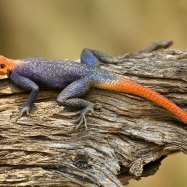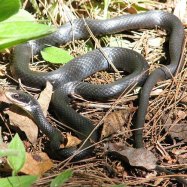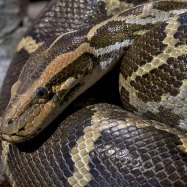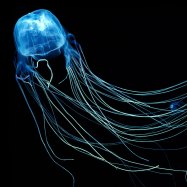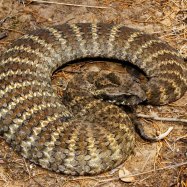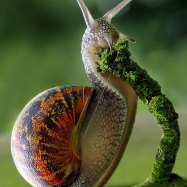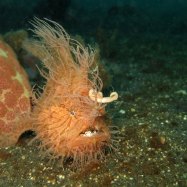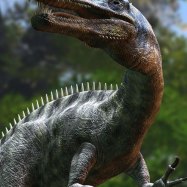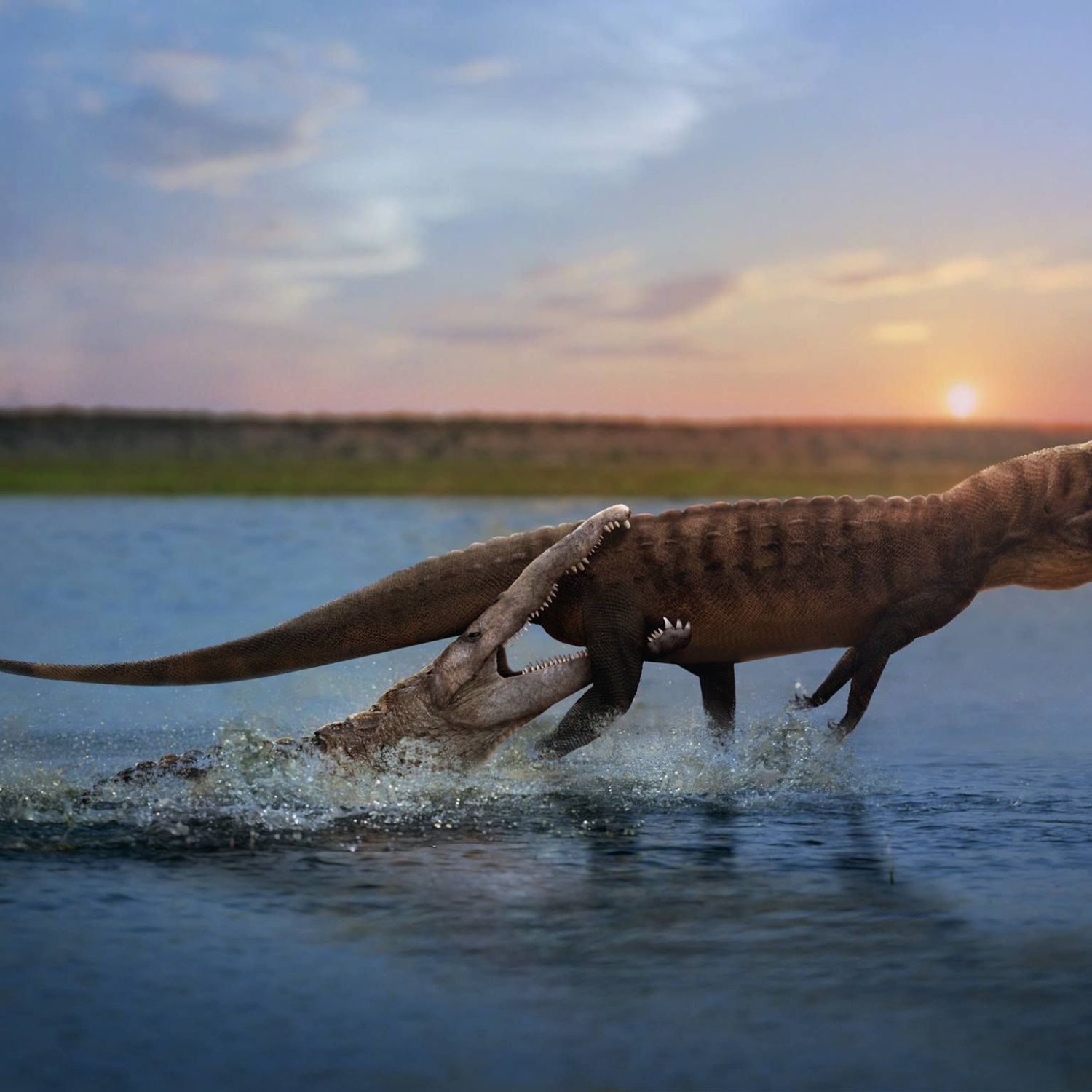
Phytosaurs
Up to 30 feet
Phytosaurs were prehistoric semi-aquatic reptiles that could grow up to 30 feet long and were often found in river and lake environments. Belonging to the Phytosauridae family, these creatures had long, narrow bodies and elongated snouts. They were fierce predators, using their sharp teeth and powerful jaws to catch their prey. Despite their size, they were agile and adapted well to their watery habitats. Though extinct now, these fascinating animals continue to capture the imagination of many.
Animal Details Summary:
Common Name: Phytosaurs
Kingdom: Animalia
Habitat: Freshwater
The Amazing World of Phytosaurs: Exploring the Mysterious Semi-Aquatic Reptiles
In the vast, diverse and ever-evolving world of animals, there are some creatures that continue to fascinate and captivate us with their uniqueness. One such group of animals are the Phytosaurs, a group of semi-aquatic reptiles that roamed the Earth during the late Triassic period. These mysterious creatures, belonging to the Order Phytosauria, have captured the attention of scientists and animal enthusiasts alike, with their incredible features and adaptations. Let's take a closer look at the world of Phytosaurs and unravel their secrets Phytosaurs.The Basics
The scientific name for Phytosaurs is Phytosauria, and they are commonly known as Phytosaurs. These creatures belong to the Kingdom Animalia and the Phylum Chordata, making them animals with a backbone. They are also classified as reptiles under the Class Reptilia, along with other famous reptiles such as crocodiles and lizards. Phytosaurs are part of the Order Phytosauria, which includes other extinct relatives that have similar body structures and adaptations to living in semi-aquatic habitats. They belong to the family Phytosauridae, sharing this family name with other Phytosaur species.Habitat and Geographical Distribution
Phytosaurs were primarily freshwater creatures, inhabiting river and lake environments during the late Triassic period. Their fossils have been found in several regions around the world, including North America, Europe, Africa, and Asia. Specifically, some countries where Phytosaurs fossils have been discovered are the United States, Germany, United Kingdom, France, Morocco, Niger, and China. These findings suggest that Phytosaurs had a widespread distribution, living in various freshwater ecosystems Pied Ball Python.Their Unique Feeding Method
One of the most intriguing features of Phytosaurs is their feeding method. They were carnivorous animals, meaning they ate meat as their primary source of nutrition. However, their feeding technique was quite different from other known predators. Phytosaurs had elongated snouts that ended in sharp teeth, allowing them to catch and hold onto their prey. They would then use their powerful neck muscles to quickly snatch their prey and jerk it into the water, making it easier for them to consume. This unique feeding method is what sets Phytosaurs apart from other reptiles of the Triassic period.Appearance and Body Shape
Phytosaurs had a distinct body shape, with long and narrow bodies that made them well-suited for their semi-aquatic lifestyle. They had four well-developed limbs, with their front limbs being larger and stronger than their hind limbs. The most striking feature of Phytosaurs is their elongated snouts, which gave them a crocodile-like appearance. However, unlike crocodiles, Phytosaurs had nostrils located on the upper side of their snouts. This adaptation enabled them to stay hidden in the water while still being able to breathe and detect prey. Phytosaurs also had thick, bony plates covering their bodies for protection, similar to other reptiles of their time.Variety in Size and Color
The size and color of Phytosaurs varied, with some species being relatively small, while others were large and imposing. The smallest Phytosaur species were approximately 6 feet long, while the largest could reach sizes of up to 30 feet. This range in size is still being studied by scientists, who are trying to understand the factors that influenced the growth and development of these creatures. In terms of color, Phytosaurs ranged from light to dark shades, with some species having darker colors on their upper body and lighter colors on their underbelly. This variation in coloring may have provided camouflage for Phytosaurs, allowing them to blend in with their surroundings and ambush unsuspecting prey.Legacy and Importance
Phytosaurs may have gone extinct millions of years ago, but their importance and legacy continue to live on. The fossilized remains of Phytosaurs offer scientists a glimpse into the past, providing valuable information about the habitat and behavior of these mysterious creatures. They also play an essential role in understanding the evolution of modern-day reptiles and their adaptations. Furthermore, Phytosaurs are part of a long lineage of semi-aquatic reptiles, making them a vital piece of the Earth's evolutionary puzzle.The Future of Phytosaurs
The study of Phytosaurs is an ongoing and ever-evolving process, with new discoveries and research being conducted by paleontologists and scientists globally. However, one significant cause of concern for Phytosaurs is the impact of climate change and human activities on their fossilized remains. As the Earth continues to change, the habitats where Phytosaur fossils are found may also change, leading to potential loss or damage to these invaluable fossils. It is crucial for us to take care of our planet and preserve its wonders, including the fossils that still hold so many secrets.In conclusion, Phytosaurs are a fascinating group of animals that have managed to capture the world's attention with their unique features and adaptations. From their semi-aquatic lifestyle to their elongated snouts and varied sizes and colors, everything about Phytosaurs contributes to their mystique. As we continue to explore and understand the world of Phytosaurs, one thing is for sure; they will continue to amaze and enchant us with their incredible legacy.

Phytosaurs
Animal Details Phytosaurs - Scientific Name: Phytosauria
- Category: Animals P
- Scientific Name: Phytosauria
- Common Name: Phytosaurs
- Kingdom: Animalia
- Phylum: Chordata
- Class: Reptilia
- Order: Phytosauria
- Family: Phytosauridae
- Habitat: Freshwater
- Feeding Method: Carnivorous
- Geographical Distribution: North America, Europe, Africa, and Asia
- Country of Origin: United States, Germany, United Kingdom, France, Morocco, Niger, China
- Location: River and lake environments
- Animal Coloration: Varies, ranging from dark to light colors
- Body Shape: Semi-aquatic reptiles with long, narrow bodies and elongated snouts
- Length: Up to 30 feet
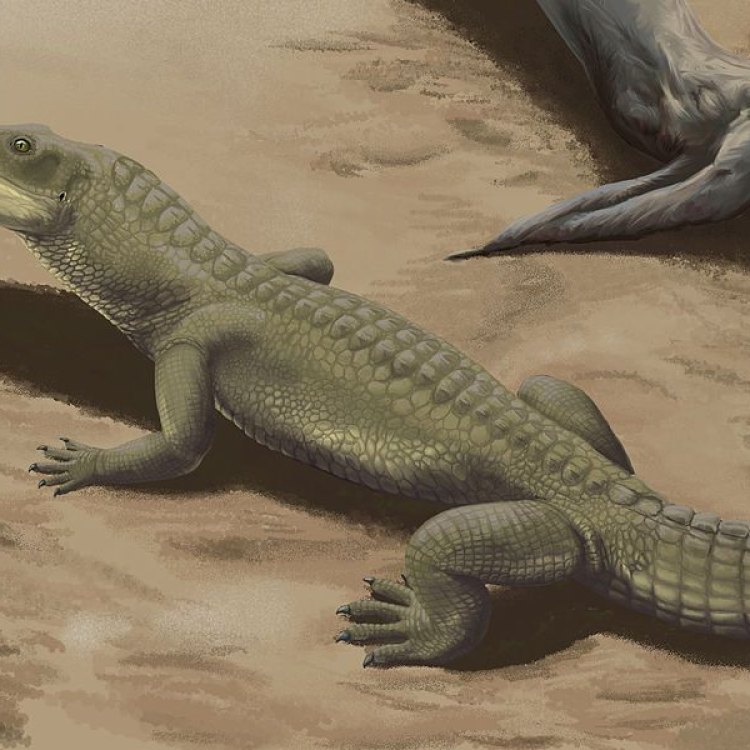
Phytosaurs
- Adult Size: Varies among different species
- Average Lifespan: Unknown
- Reproduction: Oviparous (egg-laying)
- Reproductive Behavior: Unknown
- Sound or Call: Unknown
- Migration Pattern: Unknown
- Social Groups: Unknown
- Behavior: Ambush predators, often found near the water surface
- Threats: Extinct
- Conservation Status: Extinct
- Impact on Ecosystem: Unknown
- Human Use: Fossils used for scientific research and education
- Distinctive Features: Long snouts with sharp teeth, powerful jaws
- Interesting Facts: Phytosaurs were not dinosaurs but related to modern crocodiles.
- Predator: Unknown
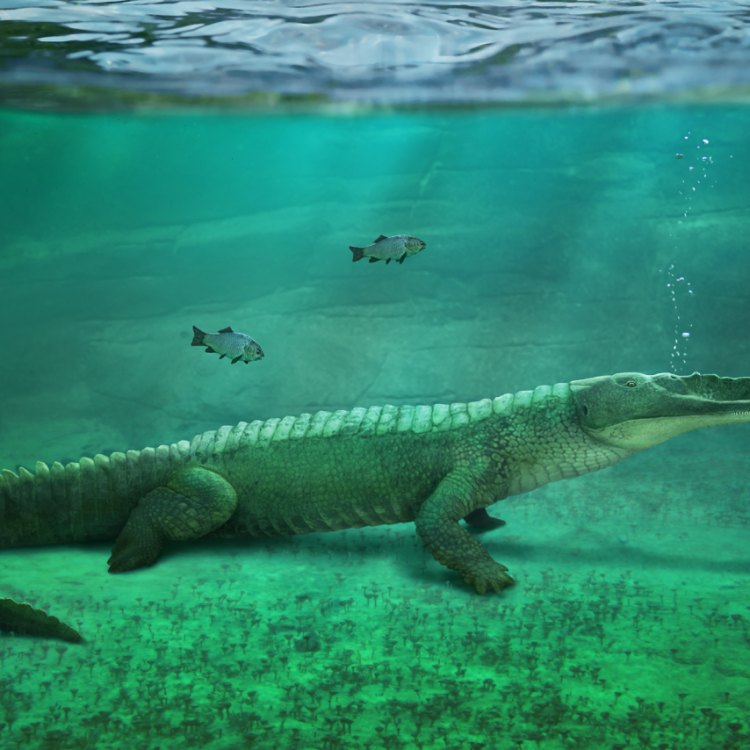
Phytosauria
The Fascinating World of Phytosaurs: The Extinct Ambush Predators
The animal kingdom is full of strange and fascinating creatures, and the phytosaurs are no exception. These ancient reptilians ruled the Earth for over 100 million years, but their existence is not as widely known as other prehistoric creatures like dinosaurs. Despite being a lesser-known species, phytosaurs were formidable predators and played a significant role in the ecosystem. In this article, we will dive into the unique features and behavior of phytosaurs, uncovering the mysteries surrounding their existence PeaceOfAnimals.Com.Phytosaurs, derived from the Greek words "plant" and "lizard," were massive reptiles that existed during the Triassic period, over 200 million years ago. They were widespread, with fossils found in various parts of the world, from Europe to the United States and even Antarctica. The name "plant lizard" may seem unusual for a predator, but it refers to the shape of their snouts, which resemble those of modern crocodiles.
One of the striking features of phytosaurs that sets them apart from other prehistoric animals is their size. Being a diverse group, phytosaurs varied in size, with some species reaching lengths of up to 30 feet and weighing over a ton. On the other hand, some species were smaller, with lengths ranging from 5 to 10 feet. Their size depended on the species and the environment in which they lived.
Despite their impressive size, little is known about the average lifespan of phytosaurs. Unfortunately, being extinct, it is challenging to gather accurate data about their lifespan Proboscis Monkey. However, based on other similar reptiles, scientists estimate that their lifespan was around 30 to 50 years.
Reproduction in phytosaurs was oviparous, which means they laid eggs. Females would lay eggs in a nest, and once hatched, the babies would fend for themselves. The exact number of eggs laid is unknown, but it is likely that they had large clutches to increase the chances of survival. Unfortunately, not much is known about their reproductive behavior, as there is a lack of evidence in the fossils discovered.
Another mystery surrounding phytosaurs is their sound or call. Most modern reptiles are known to produce sounds for communication and mate attraction, but there is no evidence to suggest that phytosaurs did the same. This could be due to the absence of vocal cords in the phytosaur's fossils, making it challenging to determine if they were capable of producing sounds.
Migration patterns and social groups of phytosaurs are also unknown. It is challenging to determine migration patterns of extinct animals, and not much evidence has been found to suggest their migration behavior. Similarly, phytosaurs' social behavior is also unknown as there is no evidence of group behavior in their fossils. However, it is likely that they were solitary animals, only coming together during mating season.
One thing that is known about phytosaurs is their hunting behavior. Phytosaurs were ambush predators, meaning they would wait for their prey to come close before attacking. They were often found near the water surface, waiting for unsuspecting animals to come for a drink. This hunting technique is similar to modern-day crocodiles and alligators. The sharp teeth and powerful jaws of phytosaurs were their primary hunting tools, making it easy for them to take down prey.
Despite their formidable appearance, phytosaurs have been extinct for millions of years. They were one of the many species that became extinct during the Triassic-Jurassic mass extinction event. This event wiped out over 80% of all species on Earth, including phytosaurs. The exact cause of their extinction is unknown, but it is speculated that it could be due to environmental changes or competition with other predators.
The extinction of phytosaurs and other prehistoric species had a significant impact on the ecosystem. As top predators, phytosaurs played a vital role in controlling the population of other animals. With their extinction, there could have been a surge in the number of their prey, causing an imbalance in the ecosystem. The loss of phytosaurs also had a ripple effect on other species, leading to changes in the food chain and ultimately affecting the entire ecosystem.
Today, the only way to learn about phytosaurs is through their fossils, which are found in various parts of the world. Due to their massive size and unique features, phytosaur fossils have become essential for scientific research and education. Paleontologists have been able to reconstruct the appearance and behavior of phytosaurs by studying their fossils. These fossils are also used to educate the public about these ancient creatures and their significance in the history of the Earth.
Apart from their distinctive long snouts and sharp teeth, phytosaurs had a few other unique features. Unlike dinosaurs, phytosaurs were not dinosaurs but were more closely related to modern-day crocodiles. However, they had more similarities to dinosaurs, such as their erect posture and legs positioned directly underneath their body for efficient movement on land. This similarity is known as convergent evolution, where unrelated species develop similar characteristics through adaptation to a similar environment.
The identity of phytosaurs' predators is also a mystery. Being at the top of the food chain, phytosaurs had few predators. However, there is evidence to suggest that they may have been preyed upon by other large reptiles, such as rauisuchians and ornithosuchids. The evidence for this theory comes from bite marks found on phytosaur fossils, which are indicative of predatory attacks.
In conclusion, phytosaurs were fascinating creatures that played a significant role in the ecosystem millions of years ago. They had unique features and behavior, making them stand out among other prehistoric animals. Despite being extinct, their fossils continue to amaze scientists and educate the public about this mysterious and elusive species. While their time on Earth may have come to an end, phytosaurs live on in our imaginations, thanks to the incredible discoveries made by paleontologists.
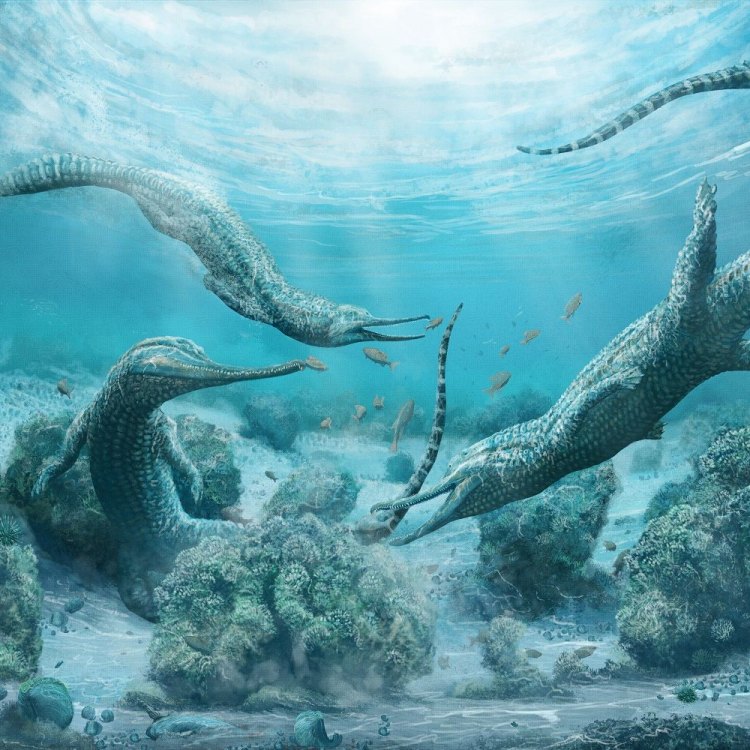
The Amazing World of Phytosaurs: Exploring the Mysterious Semi-Aquatic Reptiles
Disclaimer: The content provided is for informational purposes only. We cannot guarantee the accuracy of the information on this page 100%. All information provided here may change without prior notice.

